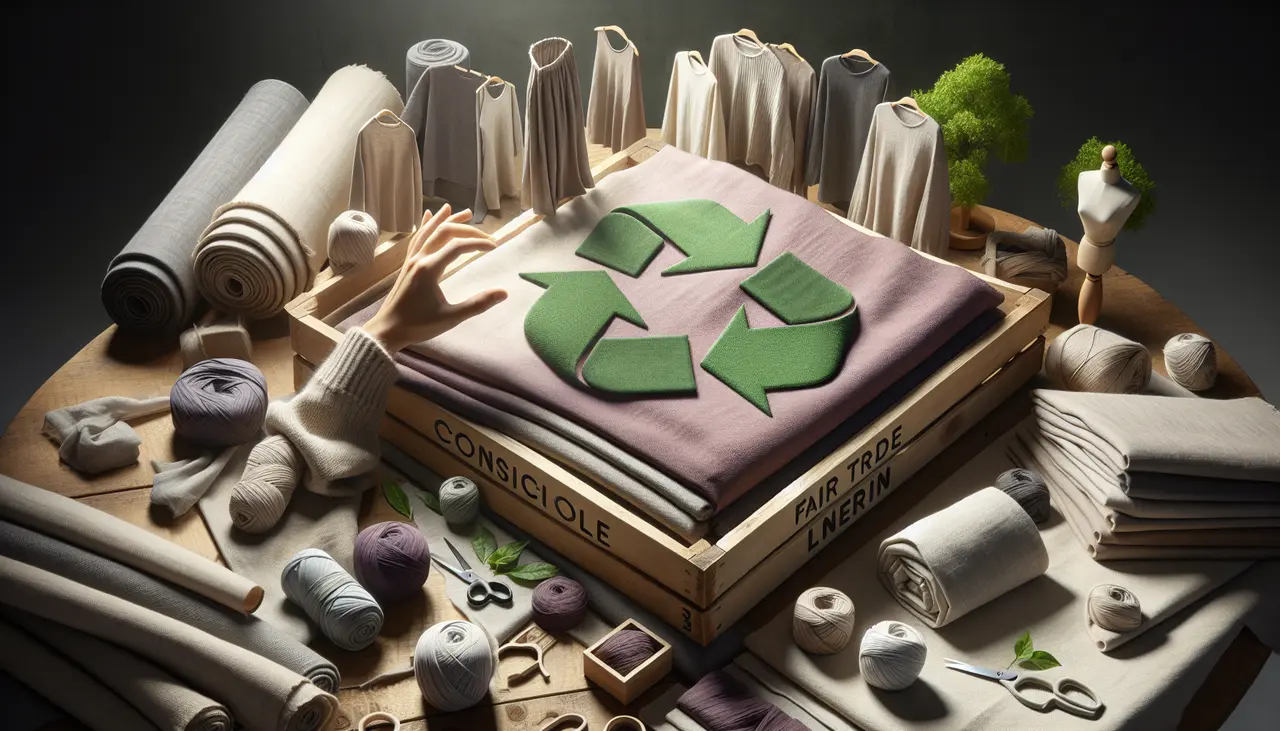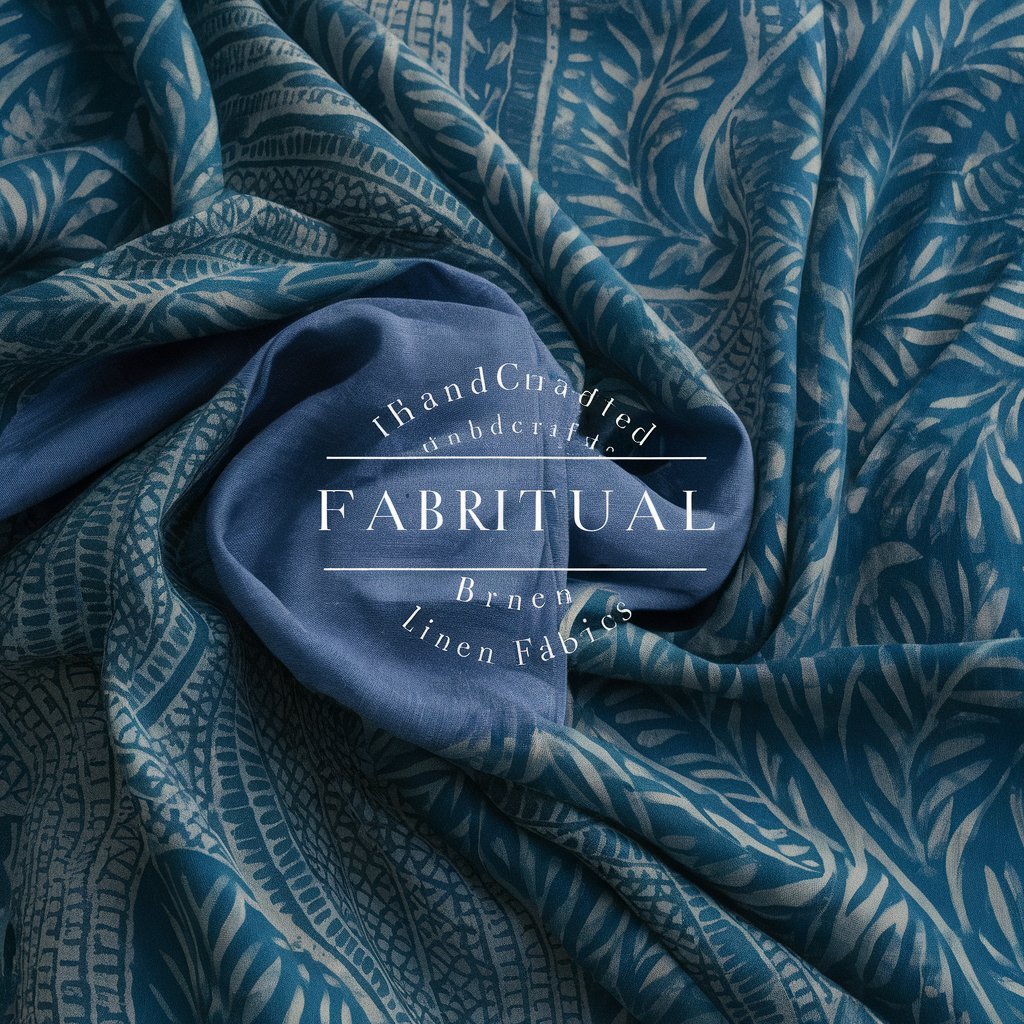Introduction to fair trade linen and its importance
Fair trade linen marks a shift towards ethical shopping, ensuring that the people who make our clothes are paid fairly and work in safe conditions. It's more than just fabric; it’s about human rights. When you choose fair trade linen, you're supporting farmers and workers to have a better life. By opting for fair trade, you're also encouraging environmentally friendly practices. These fabrics are produced with respect for the earth, using methods that reduce harm to the environment. This choice helps in cutting down the massive footprint that the fashion industry often leaves behind. So, when you pick a piece of clothing made from fair trade linen, you’re wearing a commitment to fairness, dignity, and sustainability. It’s a statement that you care about the world and the people in it.

The benefits of creating a conscious wardrobe
When you decide to build a conscious wardrobe, you're not just picking out clothes. You're making a statement. Choosing fair trade linen fabrics is a powerhouse move for several reasons. Firstly, these fabrics support ethical labor practices. That means no cutting corners. Workers get fair pay and work in safe conditions. It's all about respect and dignity. Secondly, you're voting with your wallet for sustainable agriculture. Linen comes from flax, a plant that pretty much loves our planet—requiring less water and pesticides than cotton. Plus, it's biodegradable, which is a big win for the earth. Another perk? Quality. Fair trade linen is top-notch, which means your clothes last longer. Say goodbye to fast fashion and hello to pieces that stand the test of time. Lastly, think of the style. Linen has a timeless vibe, both elegant and casual. Embracing fair trade linen lets you mix, match, and look good without feeling guilty. So, creating a conscious wardrobe? It's good for workers, the planet, your wallet, and your style. A no-brainer, really.
How fair trade linen is produced
Fair trade linen comes from a process that respects both the people making it and the planet. First, farmers grow flax plants, the source of linen, under environmentally friendly conditions. They avoid harmful pesticides and chemicals, keeping the soil and water around them clean. Once the flax is ready, it's harvested, and the fibers are then separated from the plant in a process called retting. This can be done using water, dew, or machines, depending on the method chosen for its lower environmental impact.
After retting, the fibers are combed out to remove impurities, leaving the long, soft fibers that linen is known for. These fibers are spun into yarn and then woven into fabric. The key here is that each step, from planting to weaving, follows fair trade principles. This means workers at every stage get fair wages, work in safe conditions, and have rights in their workplace. Buying fair trade linen supports a system that looks after the wellbeing of workers and aims to minimize harm to our environment.
The environmental impact of choosing fair trade linen
Choosing fair trade linen makes a big difference for our planet. When you pick fair trade, you're supporting environmentally friendly practices. Fair trade means farmers and workers get a fair pay, but it's also about respecting our earth. Linen itself is a green choice. It comes from the flax plant, which needs less water and fewer chemicals than cotton. So, when linen is made fair trade, it limits harmful impacts even more. These fabrics often avoid harsh dyes and wasteful processes. Plus, fair trade helps fight against pollution and land damage. By picking fair trade linen, you're not only making a style statement but also voting for a cleaner, healthier world.
Identifying genuine fair trade linen brands
When you’re on the hunt for fair trade linen, knowing which brands are genuinely committed to ethical practices is key. First off, look for certifications. Certifications like Fair Trade Certified or Global Organic Textile Standard (GOTS) are big flags waving at you, saying, “Hey, we’re playing by the rules!” But don’t just stop at the labels. Dive deeper. Check out the brand’s websites and social media. Genuine fair trade brands talk about their mission and the communities they support. They're not shy about their process or the people behind their products. Next, reviews can be your best friend. See what other shoppers say. Not just about the quality of the linen but about the brand's ethics. If there’s a lot of positive buzz about their practices, you’re likely on the right track. Remember, genuine fair trade linen brands are all about transparency, quality, and making a positive impact. Stick with these tips, and you’ll be wrapping yourself in ethically produced linen in no time.
Integrating fair trade linen into your wardrobe
Integrating fair trade linen into your wardrobe is simpler than you might think. Start by looking for clothing brands that value sustainability and fair trade practices. These clothes might cost a bit more, but they pay off in quality and ethics. Every fair trade linen piece you buy ensures that the workers behind the fabric are paid fairly and work in safe conditions. You can begin by replacing worn-out basics with fair trade options. Next time you need a new t-shirt or a comfortable pair of pants, opt for fair trade linen. Not only does it look good, but it also feels amazing on your skin and does wonders for your conscience. Also, consider the longevity of fair trade linen. It's durable, meaning you’ll buy less over time, making it a smart choice for both the planet and your wallet. Remember, every purchase is a vote for the kind of world you want to live in. By choosing fair trade linen, you're supporting a healthier planet and fair wages.
Caring for your fair trade linen to make it last
Keeping your fair trade linen in top shape isn't rocket science, it's all about simple care. First, always check the care label; it's your linen's personal caretaker. Machine wash? Cool, but go easy - a gentle cycle with mild detergent keeps fibers strong. Hot tip: avoid bleach, it's brutal on natural fibers. Linen loves to air dry. Yes, it wrinkles, that’s its charm. If you're ironing, do it while the fabric is still damp. Iron's too hot? Use a pressing cloth to avoid scorch marks. Storage is key; no tight spaces. Let your linen breathe and avoid hangers that could misshape it. Follow these pointers, and your fair trade linen won't just last, it'll age gracefully, getting softer and more luscious with time.
The cost comparison: Fair trade linen vs conventional fabrics
When talking fair trade linen versus conventional fabrics, the price tag often sparks debate. Fair trade linen tends to be pricier upfront. This is because fair trade practices ensure workers get fair wages and work in safe conditions. Plus, these practices often support environmental sustainability, which can add to the cost. On the other hand, conventional fabrics might be cheaper, but that lower price can come at a hidden cost. It might mean workers are underpaid and work in poor conditions, and the environment may take a hit from unsustainable practices.
To put it in perspective, fair trade linen pieces might cost more at the checkout, but they carry value beyond the price tag. They support ethical manufacturing and sustainable practices, contributing to a positive impact on the world. When you choose fair trade, you're voting with your dollar for the kind of world you want to live in. On the flip side, opting for cheaper, conventional fabrics could mean supporting a cycle of unfair labor practices and environmental harm. So, while fair trade linen might feel like a splurge, it's an investment in quality, ethics, and sustainability.
How your choice supports sustainable fashion
When you choose fair trade linen fabrics, you're doing more than just buying clothes. You're making a stand for sustainable fashion. Fair trade means workers get fair wages and work in safe conditions. This choice supports the environment and promotes ethical labor practices. Every time you pick fair trade, you help reduce the fashion industry's carbon footprint and fight against unjust labor. It's a ripple effect – your choice influences others, pushing more brands to adopt sustainable practices. So, by choosing fair trade linen, you're not just filling your wardrobe, you're helping to shape a better fashion industry.
Summarizing the conscious choice: Why fair trade linen matters
Choosing fair trade linen is more than just picking fabric; it's about making a statement with your wardrobe. Fair trade means that the people who make the linen are paid fairly and work in safe conditions. This choice impacts not just your closet, but lives around the world. When you buy fair trade linen, you're supporting ethical labor practices and contributing to sustainable development in farming communities. It's a fabric choice that feels good on your skin and your conscience. Not to mention, fair trade linen is high-quality and lasts longer, meaning you're investing in pieces that won't soon end up in a landfill. So, when you decide to go for fair trade linen, you're not just buying clothes; you're part of a bigger movement for positive change.



